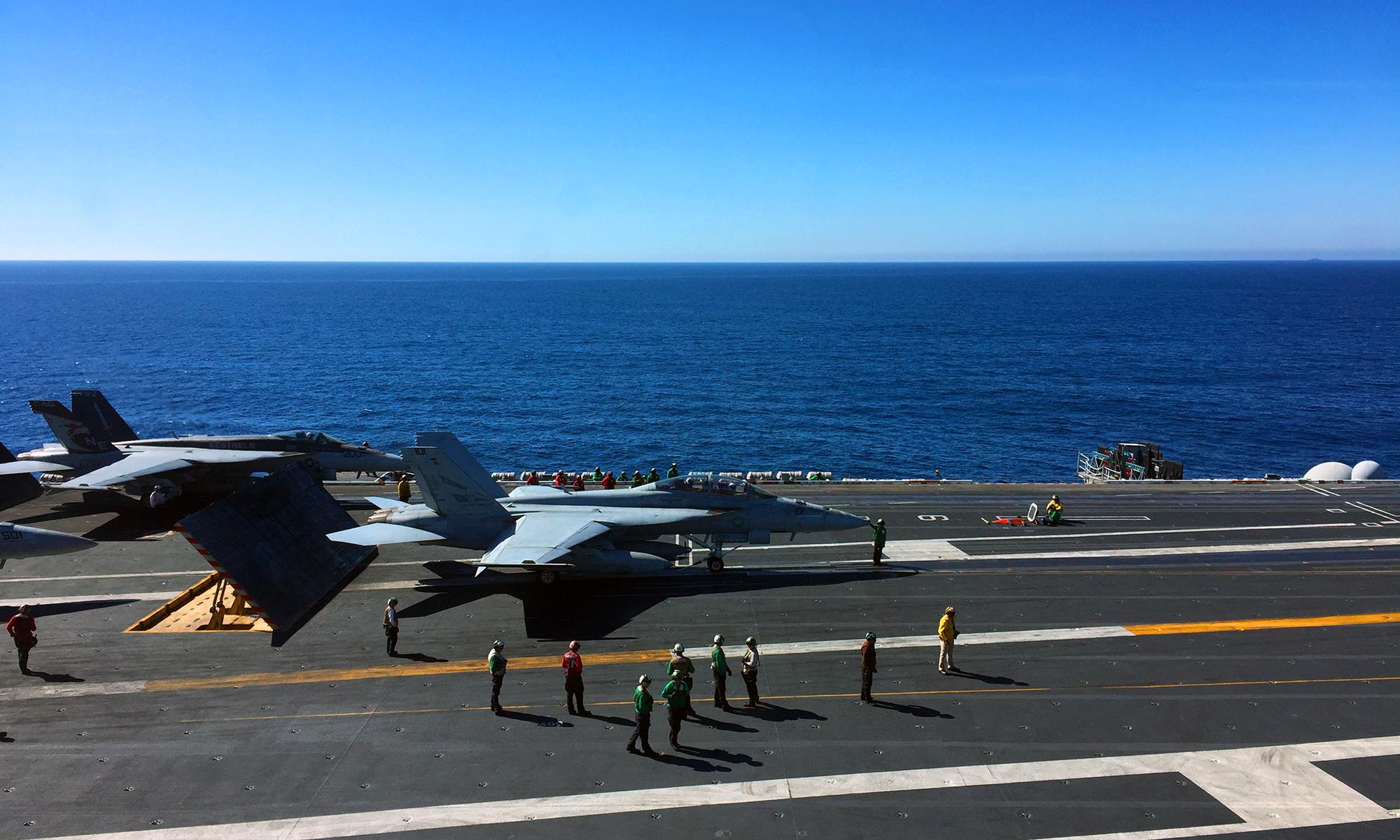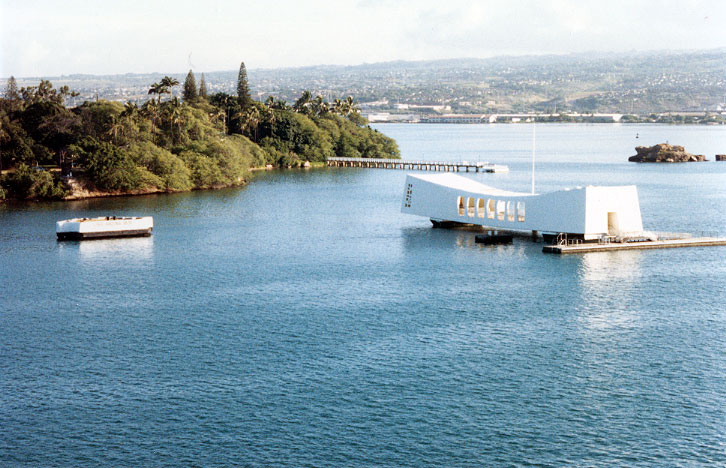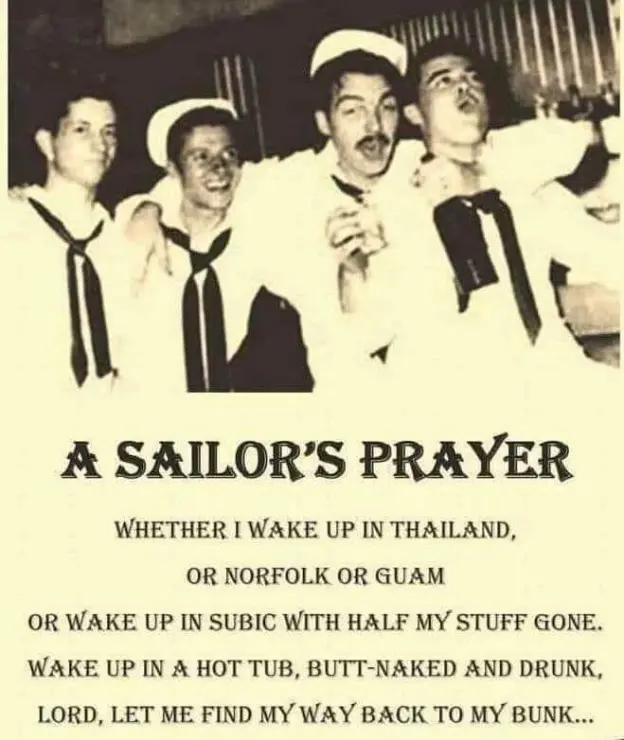I originally posted this on my first blog. In fact, it was THE reason I started blogging. I had an experience in my life that I never forgot, and I always thought, “you know, if I die, I’d really like to at least get that thought down on paper… or something”. So I started a blog on an old blogging platform (remember blogger?) and tried to put it into words. I wasn’t very good at it initially, and it sort of mentally exhausted me and I wound up splitting it into two posts that were spread out over a couple of weeks.
The Fourth of July and Douglas Dimberg
It’s officially the Fourth of July and this is what I remember: It was November 30th, 1988 and I had worked about eighteen hours that day. I was an Aviation Ordnanceman on the USS Nimitz at the time, and was working “CAG (Carrier Air Group) Arm-Dearm” and was on Cat 3. This meant I was working the third catapult all day, which meant “cats and traps”, or as they’re commonly known, takeoffs and landings. Those days are rough because you have to be up well before the first takeoff and stay until the last trap of the day, which is usually just before midnight. So getting up around six, and working until midnight was pretty much the standard “Cat 3 day”. So there I was, just getting off work, and looking forward to catching up on a little rest. I was finished, showered, dressed for bed, and ready to call it a night when I heard it, “GENERAL QUARTERS, GENERAL QUARTERS ALL HANDS MAN YOUR BATTLE STATIONS. PROCEED UP AND FORWARD ON THE STARBOARD SIDE, DOWN AND AFT ON THE PORT SIDE… GENERAL QUARTERS, GENERAL QUARTERS”… Without missing a beat, off came the sleepwear, on went the greens, redshirt, and boots, and out the hatch I went.
My berthing (where I slept and lived) at the time was on the level just beneath the arresting gear aft, pretty much under the 4 wire. I was above the hanger bay and below the flight deck. When I woke up every morning to go to work, I normally would proceed out of my berthing area, through a hatch leading to the catwalk outside. This would place me along the edge of the flight deck, on the port side, where the landing safety officer would normally stand. I’d hop up the ladder, up on deck, and I could cut straight across the flight deck to work. Honestly, since it was after flight quarters, and nothing was landing or taking off, it would be fine to head out to my shop in this manner, even at night under general quarters. So off I went, getting ready to head up the catwalk to the flight deck when Petty Officer Tucker, another AO, came down from precisely where I was going. “Can’t go that way,” he said. “Why not?”, I asked. “Because it’s all on fire”. It took a couple of seconds for that to sink in.
So there it was. The flight deck was on fire. Like, completely engulfed.
Later, we’d learn that an A-7 Corsair II had shot its M61 Vulcan (20 mm) rounds into a KA-6D tanker that was full of fuel. The rounds were anti-tank, depleted uranium, high-explosive rounds that were packed with White Phosphorus that ignites on contact with Oxygen. They’re designed to go INTO something (a tank, in this case), and set the INSIDES of it (the tank) on FIRE. Imagine how that works on a tanker aircraft that’s full of fuel. The tanker was parked near the bow (front of the ship), between Catapults 1 and 2 in an area known as “the street” with the A-7 parked directly next to it facing its side, over Cat 2.
I know, I know, you’re saying to yourself, “How on earth can guns fire on the ground? Aren’t there steps to ensure that nothing like that happens?”.
It’s very simple. Weapon systems won’t work on the ground.
That being said, there’s an actual physical switch in the landing gear called the “weight-on-wheels” switch. When the plane is on the ground, the weight of the aircraft compresses the landing gear and the switch is “active”. Weight is ON the wheels, and the weapons systems are not allowed to arm. Missles can’t fire, Guns can’t shoot. So to “fool” the airplane, sometimes you have to use a “weight-on-wheels actuator”. It’s just a wedge shaped block of wood that you insert into the weight-off-wheels switch to trip it and make the plane think the landing gear is up. Of course, before you do this, you’re supposed to go through a lengthy checklist that includes disconnecting any plugs or wires that might lead to the accidental firing of a weapon.
Not so in this case. The gun is connected, the plane thinks that weight is OFF the wheels, and some poor sucker in the pilot seat of the A-7 pulls the trigger, thinking nothing is going to happen. The whole team was negligent and people paid with their lives.
So what happens is, the second he pulls the trigger he blows rounds into a KA-6D tanker not 15 yards away igniting the fuel inside and engulfing the whole immediate area in flames. Several people are killed instantly including Douglas, who was just walking by, on his way to an EA-6B Prowler to work on it. Doug and I had gone to boot camp in Orlando together in May/June of 1985. Upon completion of boot camp, he went off to his “A-School” and I went off to mine. I eventually made my way to the VA-165 Boomers stationed on NAS Whidbey Island where we ran into each other months later. We’d occasionally run into each other on base, or, as we were deployed, we’d see each other in the chow line, on the flight deck, FOD walkdown, etc.
So that’s the scene I’m faced with as I make my way to the flight deck. It’s probably been on fire now for about four or five minutes as I head up there on the starboard side, forward of the island. I’m an Aviation Ordnanceman, so the starboard side of the island is the weapons farm, where all of the weapons are staged for loading onto aircraft on the flight deck. There are enough people already worrying about the weapons staged there and that was their job, and I wasn’t about to get in the way. Instead, I’m grabbed and led across the flight deck, behind the fire, to the port side. There I run into my best friend Mike, who’s on a team and slowly advancing toward the fire. My team grabs a hose and maneuvers to the left of Mike, coming at the fire now from almost the top/bow direction. So I’m on a hose advancing, and Mike’s on a hose advancing.
I don’t remember when the AFFF (Aqueous Film-Forming Foam) kicked in, but I do remember fighting the fire, helping move aircraft, and walking around in the early morning hours in several inches of foam, so I know the system kicked on at some point. I recall watching the sun rise and getting the first chance to see the devastation on the forward flight deck. Our tanker was a complete loss. Over the side it went, but not before our squadron spent the better part of the day stripping out every useful component in her. I remember the kind of stunned silence of walking around up there. People going about their jobs with a focus and determination that cut through the tragedy of the day. I don’t remember having much time to reflect on the accident or think about what had happened until much later. It just seemed like there was so much to do.
I have pretty vivid memories of fighting the fire with Mike. Later, I think Mike and I would acknowledge the moments, and maybe talk about how crazy it was there for a couple of hours, but I don’t think we ever sat down and talked about it. At one point during the fire, I remember thinking that we were getting cut off from the rest of the ship because the fuel spilling out of the tanker was on fire and it was spreading liquid fire across the deck as it spilled, and the combination of the ship turning and the fuel spilling was making it extremely difficult to see how we weren’t going to wind up completely cut off on the bow with no place to go but over the side. I remember thinking, “if I go over, there’s no way they’ll ever find me, what a shitty way to go, I wish I could tell my mom goodbye…” and that was about it. The rest of the time seemed like a blur of getting what needed to be done, done.
I can close my eyes sometimes and make myself see Dimberg. I don’t remember exactly what he looked like, and that’s a shame. I wish I could. I can see a sort of rough outline of him like he’s not exactly in focus, and in that outline, I can see him smiling. I don’t even want to forget that out in the ocean, far away from military bases, and “action”, and “hot zones” a man named Doug Dimberg gave his life for his country. He died doing his job. He had friends and they remember him. The flight deck of an Aircraft Carrier is a dangerous place, and occasionally people die up there. Right now, while you’re reading this, there are young men and women who are working on one of those very same flight decks, doing those very same jobs, and who deserve our respect and admiration.
Here’s hoping every single one of them makes it home in one piece.


